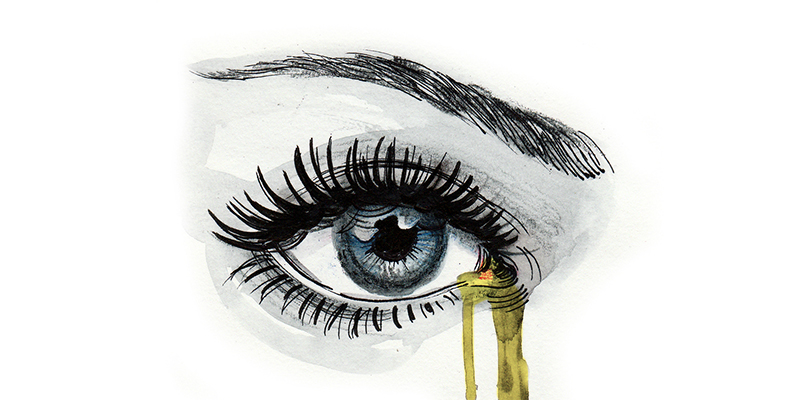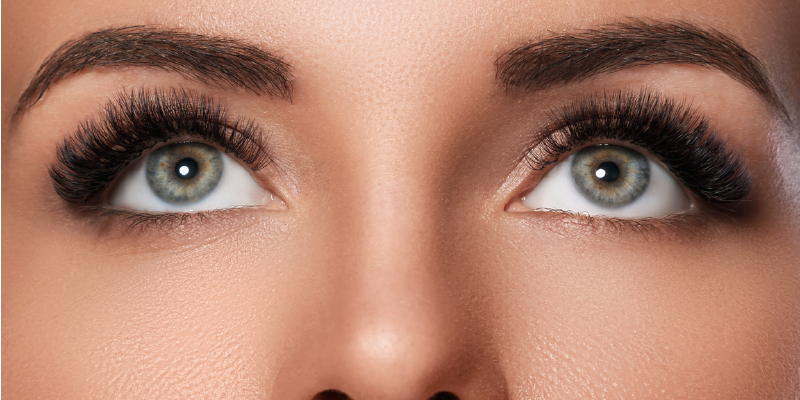It can be quite shocking to see clumps of eyelashes on your washcloth or face wipe or to see your mascara applicator suddenly clogged with them. Before you panic though, it is important to realize that there are a lot of reasons that this might happen. Some of these are totally natural and normal and some are indicative of a medical issue that you should seek treatment for and manage. The good news is that for most people, eyelash loss is temporary and for those that it is not there are alternatives.
Functions of Eyelashes
Your eyelashes serve several important purposes. They protect your eyes from particulate matter getting into them, they serve as sensors to cause a blink reflex when a foreign body approaches your eye to prevent injury, and they help to keep too much moisture from evaporating from the eye surface. Eyelashes are also one of the most universal signs of beauty. Women and men covet thick, long, curled, dark lashes that frame the eye. Mascara and other products are used by many people to enhance their look and there is a booming market in mink and other fake eyelashes and lash implants.
The human eye has anywhere from 90-160 lashes on the top lid and about 80 on the bottom; the average length of an eyelash is just 10 millimeters long. (Source). Eyelashes, like every other hair on the human body, grows from hair follicles. They have sebaceous glands along-side the follicles. The growth and shedding cycle lasts several months, with the entire set of eyelashes turning over within a year because the lashes are at different stages.
Eyelashes Develop in Stages
These stages, or phases, are:
- The Anagen (Growth) Phase. This is the active growing stage and lasts anywhere from 30 to 45 days. At any given time 40% of the upper and 15% of the lower eyelashes are in this phase. The lashes grow to their full length and then stop growing, a little different from the hair on your head.
- The Catagen (Transition) Phase. This is the phase in which the lashes have stopped growing. During this 2-3-week period, the hair follicle shrinks.
- The Telogen (Resting) Phase. During this time period, which is around 100 days, the eyelashes eventually fall out and new ones begin to grow. It can take 1-2 months for an eyelash to grow back.
Because all of your eyelashes are in their own part of the growth cycle it is usual that on any given day at least one, if not several, eyelashes will fall out. Losing many more than 3-5 on any given day is an indication that something else might be going on.
Diseases Can Cause Eyelash Loss
There are a number of disease-related causes of lash loss that could be contributing. These include:
- Trichotillomania Tangle. This is a psychological disorder in which people have an uncontrollable impulse to pull out their own hair. People with this disorder commonly pull out their eyelashes. Sometimes instead of one hair at a time, people pull multiple hairs out.
- Thyroid. When a person has an over or under-active thyroid they can lose their eyelashes. In both cases, the hair can break off.
- Alopecia Areata. This is an immune disorder that causes hair loss due to the immune cells attacking the hair follicles.
- Chalazion. This occurs when an oil gland in the eye area becomes blocked and causes a hard, painful lump. Although eyelash loss is not that common, it can happen.
- Blepharitis. This is an inflammation of the eyelids and eyelash follicles caused by bacteria, parasites, the blockage of eyelid sebaceous glands, or allergies. It causes redness, itching, swelling, and/or burning. It can be accompanied by a gritty feeling in the eye and heavy dandruff that can appear wet along the lid margin.
If you suspect any of these disorders for your eyelash loss you should seek medical treatment. Know that there are ways to control all of them. In the case of blepharitis, for instance, Cliradex can work wonders. Not only is it formulated with T4O, the most important component of tea tree oil that kills the parasites that cause blepharitis (Demodex mites), but its soothing properties will help to treat the symptoms as well.
Other Factors Affecting Lash Growth and Loss
There are also eyelash loss triggers that are not directly related to a disease. These can include:
- Allergy to mascara. Because mascaras have chemicals and compounds in them it is possible that you have a sensitivity to an ingredient that is causing a reaction. These reactions can include contact dermatitis, which happens when allergens contact your skin, and conjunctivitis, which happens when allergens fall into the eye and irritate the conjunctiva.
- Chemotherapy. This cancer treatment frequently comes with the side effect of losing body, facial, and scalp hair (including your eyelashes). This may be a short or long-term impact, which is something that your doctor can advise you on.
- Poor eye hygiene. One of the most common reasons that eyelashes fall out is poor eye hygiene, especially if you wear eye makeup. If not washed off before bed, mascara and eyeliner can cause your eyelashes to become weak and brittle, which may make them fall out faster than normal. In some cases, an allergic reaction to a chemical ingredient in mascara and other cosmetic products could be the culprit of thinning eyelashes. Mascara can also trap airborne allergens like pollen, dust and even microscopic mites within your eye area, which can also cause lashes to fall out and red, watery or itchy eyes. Daily cleansing with Cliradex will help to assure good eye health. (Source).
- Lash Extensions. These and false eyelashes are a great tool when you need to replace your lashes, and they can give you a fuller, thicker look, but they can also cause your natural lashes to fall out if you’re not careful. Because most styles of eyelash extensions are applied with glue, pulling them off without using an oil-based cleanser or solution could damage your natural lashes at the root, which may interfere with future growth. (Source).




